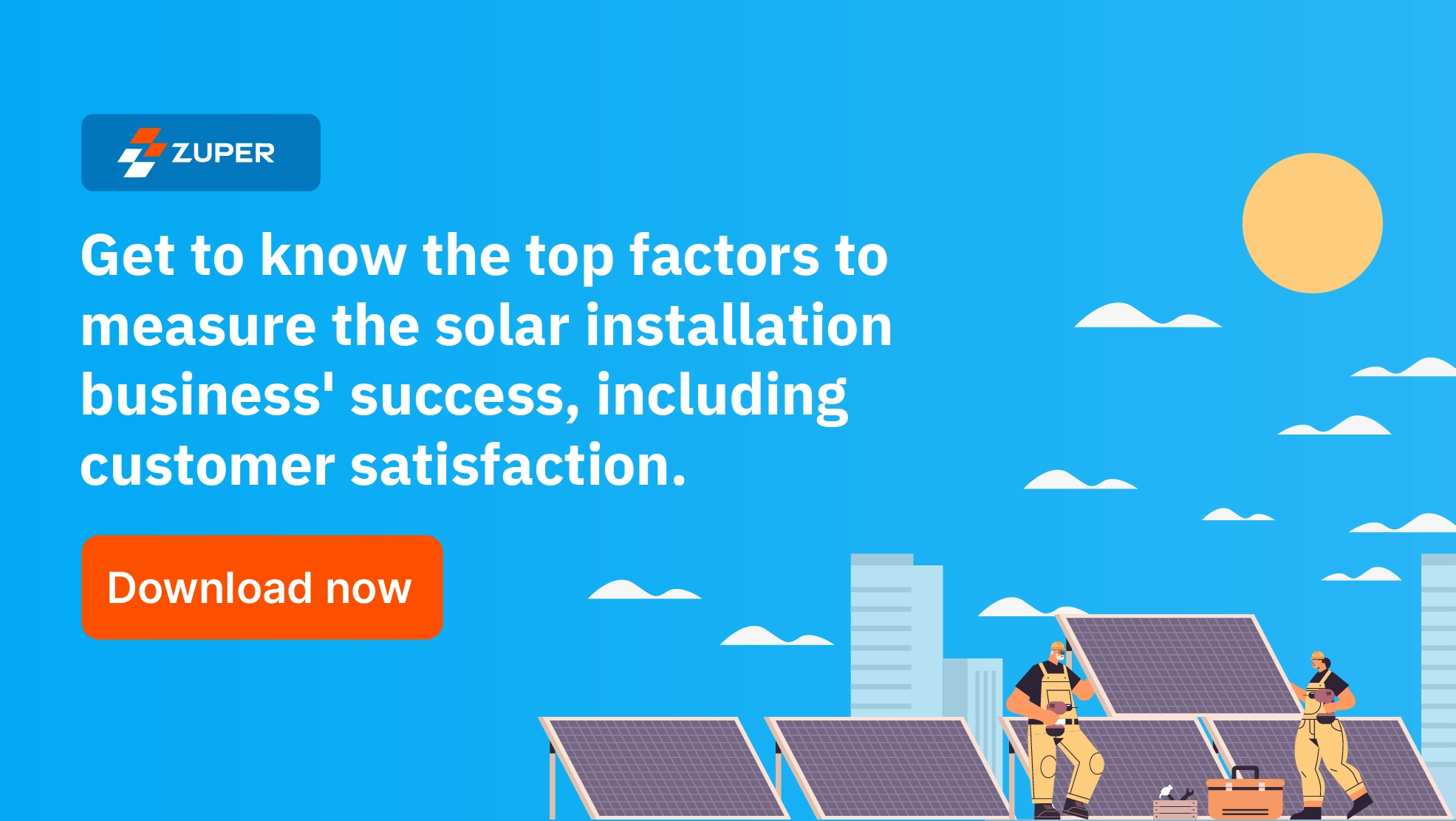In August 2022, President Biden passed the Inflation Reduction Act, extending the federal solar tax credit at 30% through 2032. This provided much-needed certainty and stability for the solar industry, encouraging homeowners to consider solar installations. If you’re a homeowner in the United States, the increasing popularity of solar energy is hard to miss. The compelling reasons behind this surge are multi-faceted, ranging from the declining costs of solar systems to the growing environmental consciousness and the desire for energy independence. This generous incentive, extensive media coverage, and the impending expiration of the credit in 2035 have sparked widespread conversations and prompted a rush to capitalize on this lucrative opportunity.
The availability of state and local incentives layered on top of the federal credit further enhances the financial appeal of solar panel installation. This convergence of factors has resulted in a perfect storm, propelling an unprecedented level of interest and urgency surrounding the federal solar tax credit in the US. With this comprehensive guide, we aim to empower homeowners like you with trustworthy insights and invaluable information to navigate and maximize the benefits of this timely and valuable incentive for transitioning to clean energy.
What is a tax credit?
A tax credit is a type of financial incentive provided by the government to individuals or businesses that can be deducted from their tax liability. A tax credit is a reduction in the amount of income tax that you would normally have to pay, equal to the same amount as the credit. Unlike deductions, which reduce your taxable income, tax credits offer a more direct way to lower your final tax bill. They act as dollar-for-dollar reductions applied directly to the amount you owe the government.
Think of it as a financial incentive offered by the federal government or your state to encourage specific behaviors, such as purchasing energy-efficient appliances, caring for family members, or even adopting a pet. These credits come in various forms, each with its own eligibility criteria and potential savings. While claiming these credits can involve navigating complex tax forms and regulations, understanding their basic function empowers you to explore their potential to reduce your annual tax burden and keep more of your hard-earned money where it belongs that is in your pocket.For instance, by claiming a $1,000 tax credit from the federal government, your federal income tax amount is reduced by $1,000. This type of credit is also known as an Investment Tax Credit (ITC), but it is not the same as the ITC provided to businesses owning solar systems.
What does the federal solar tax credit mean?
The residential solar energy credit provided by the federal government is a type of tax credit that taxpayers can utilize to offset a portion of their federal income taxes. This credit applies specifically to the cost of installing a solar PV system and is not applicable to other forms of renewable energy, which are not covered in this guidance.
The federal solar tax credit is a fantastic incentive for homeowners to switch to solar energy. In 2024, you can claim a 30% credit on your federal income taxes for the cost of your solar panels installed during the same year. This represents a significant boost from the 26% credit offered in 2020 and 2021. However, this perk isn’t permanent: it gradually reduces to 26% in 2033 and 22% in 2034 before expiring completely in 2035. So, if you’re considering joining the solar revolution, now’s the time to take advantage of this generous tax break and reap the benefits of solar energy for years to come.
What are the qualifications to claim the federal tax credit for solar energy?
It’s very likely you can qualify for the federal solar tax credit, but a few factors need to be confirmed.
- Your solar panel system was set up at some point between January 1, 2017, and December 31, 2034. It is situated at your residence in the United States, as mentioned in the US Code Section 25D.
- You have two options. Either you are the owner of the solar panel system, which means you either bought it outright or financed it, but you are not leasing it or paying a solar company for the electricity it generates.
- You have purchased a stake in a community solar project that is not located on your property, as documented in the IRS statement. This ruling does not serve as a precedent for other taxpayers and does not apply if you only buy electricity from a community solar project.
- The solar system must be brand new or used for the first time to be eligible for the tax credit. It can only be claimed for the initial installation of the solar equipment.
What is covered under the expenses for Solar incentives?
Primary expenses
- Solar panels and equipment include the actual panels, inverters, wiring, mounting hardware, and other essential components needed for your system to function.
- Labor costs cover the fees paid to licensed professionals for installing your system.
- Permits and inspection expenses required by your local government can be included.
- You can also claim the sales tax paid on eligible expenses related to the solar system installation.
Additional Expenses
- Storage equipment expenses for systems installed before December 31, 2023, a battery storage system with a capacity of at least 3 kilowatt-hours (kWh) are eligible for the credit. However, this benefit is not currently available for systems installed in 2024 due to a recent policy change.
- Pre-installation studies expenses are covered. Professionals conducting feasibility studies or solar mapping before installing the system may be eligible, but be sure to check with the IRS for specific requirements.
Things Not Covered
- The tax credit doesn’t cover the costs associated with routine maintenance or repairs after the system installation.
- Interest payments on loans or financial arrangements for your solar system aren’t directly included in the credit calculation.
- If your roof needs repairs or upgrades to accommodate the solar panels, those costs wouldn’t be eligible for the credit.
How do other incentives I get for solar affect the federal tax credit?
To find up-to-date details on solar incentives and their respective contact information, please check the DSIRE website, which contains a comprehensive database for state incentives related to renewables and efficiency.
In most cases, the subsidies received from your utility for installing a solar PV system are not subject to income taxes due to a federal law exemption. This means that the utility rebate for the solar installation is deducted from the system costs before calculating the tax credit. Suppose you invested $25,000 in energy-efficient upgrades for your home in 2023 and received a utility rebate of $2,500. In this case, your tax credit would be calculated by multiplying the reduced cost of $22,500 (after deducting the rebate) by the tax credit rate of 0.25, resulting in a tax credit of $5,625.
Payments received by a taxpayer from a public utility as compensation for any surplus electricity produced but not used by the taxpayer and instead delivered to the utility’s electrical grid (such as net metering credits) do not count as subsidies for the installation of qualifying property. These payments do not impact the taxpayer’s eligibility for tax credits or the amount they may receive.
If your utility or another purchaser offers you monetary compensation or a reward for the renewable energy certificates or other environmental attributes of the electricity produced, the payment may be classified as taxable income. This will result in an increase in your overall income, but it will not affect the federal solar tax credit. Please note that relying on a private letter ruling as precedent is not recommended for other taxpayers.
Solar rebates provided by state governments typically do not affect your federal tax credit, in contrast to utility rebates. For instance, if you received a one-time rebate of $1,500 from your state government for installing a solar PV system in 2023, and the installation costs were $20,000, your federal tax credit calculation would remain unchanged.
The result of multiplying $20,000 by 0.30 is equal to $6,000. State tax credits for the installation of solar PV typically do not affect federal tax credits, and vice versa. However, receiving a state tax credit may lead to a higher taxable income reported on your federal taxes because your state income tax deduction would be reduced. Due to the Tax Cuts and Jobs Act of 2017, there is a $12,000 limit on state and local tax (SALT) deductions until 2025.
This means that if a homeowner still has a SALT amount exceeding $12,000 after claiming a state tax credit, the federal tax rate would not be affected, and the state tax credit benefit would not be reduced (due to the SALT limit). Ultimately, claiming a state tax credit would result in the state tax credit amount being effectively taxed at the federal tax level.
If I meet all requirements, can I claim the credit?
If you meet all the eligibility requirements, you can indeed claim the federal solar tax credit. The federal solar tax credit, also known as the Investment Tax Credit (ITC), is a financial incentive the U.S. government provides to encourage the adoption of solar energy systems. To qualify, you must have installed solar panels on your residential or commercial property, and the system must be in use for generating electricity.
The credit allows you to deduct a percentage of your solar installation costs from your federal tax liability. The specific percentage is determined by the year of installation, and as of my last knowledge update in 2022, it is set at 26%. But, it’s crucial to stay updated on any changes in tax laws, as percentages may vary in subsequent years. Ensure that you own the solar system or have a solar lease agreement that qualifies for the credit. Always consult with a tax professional to ensure compliance with current tax regulations and to maximize the benefits of the federal solar tax credit for your specific situation.
Can I get more information on the Solar tax credit?
You can get ample authoritative information on the federal solar tax credit and its intricacies by turning to official resources provided by the Internal Revenue Service (IRS). The IRS website is a comprehensive hub that outlines eligibility criteria, calculation guides, and necessary forms. To enhance your understanding further, the Energy Star program offers valuable insights into selecting qualified solar providers and estimating potential savings.
Explore the Department of Energy’s resources for additional guidance on navigating the credit, solar incentives, and broader benefits of solar energy. Consumer Reports provides an impartial guide for more in-depth perspectives, emphasizing the tax credit’s benefits, limitations, and key considerations. Rooftop Solar Guys simplifies the complexities with an easy-to-understand infographic available on YouTube. Go through the Solar Power Network’s comprehensive guide, which offers step-by-step instructions and downloadable resources to assist you in successfully claiming the tax credit.
Final thoughts
The credit for solar photovoltaics presents an unprecedented opportunity for homeowners like you to embrace clean energy and reap substantial financial benefits. The combination of declining solar system costs, environmental concerns, energy independence, media attention, and the impending expiration of the tax credit has fueled a surge in interest and urgency around this valuable incentive. With this comprehensive guide, we hope you got equipped with the knowledge and insights necessary to leverage the federal solar tax credit to its fullest potential.
If you found this guide useful and insightful, subscribe to our blog to stay updated on the latest developments, tips, and expert guidance related to solar energy and federal tax solar incentives.
Disclaimer:
This article provides an overview of the federal investment tax credit for residential solar photovoltaics. It does not constitute professional tax advice or other professional financial guidance and may change based on additional guidance from the Treasury Department. Please refer to the official sources for the most current and accurate information. This guide should not be used as the sole source of information when making purchasing decisions, investment decisions, tax decisions, or when executing other binding agreements. We recommend consulting official websites and seeking professional advice before proceeding with any decisions related to solar investments and tax credits.





